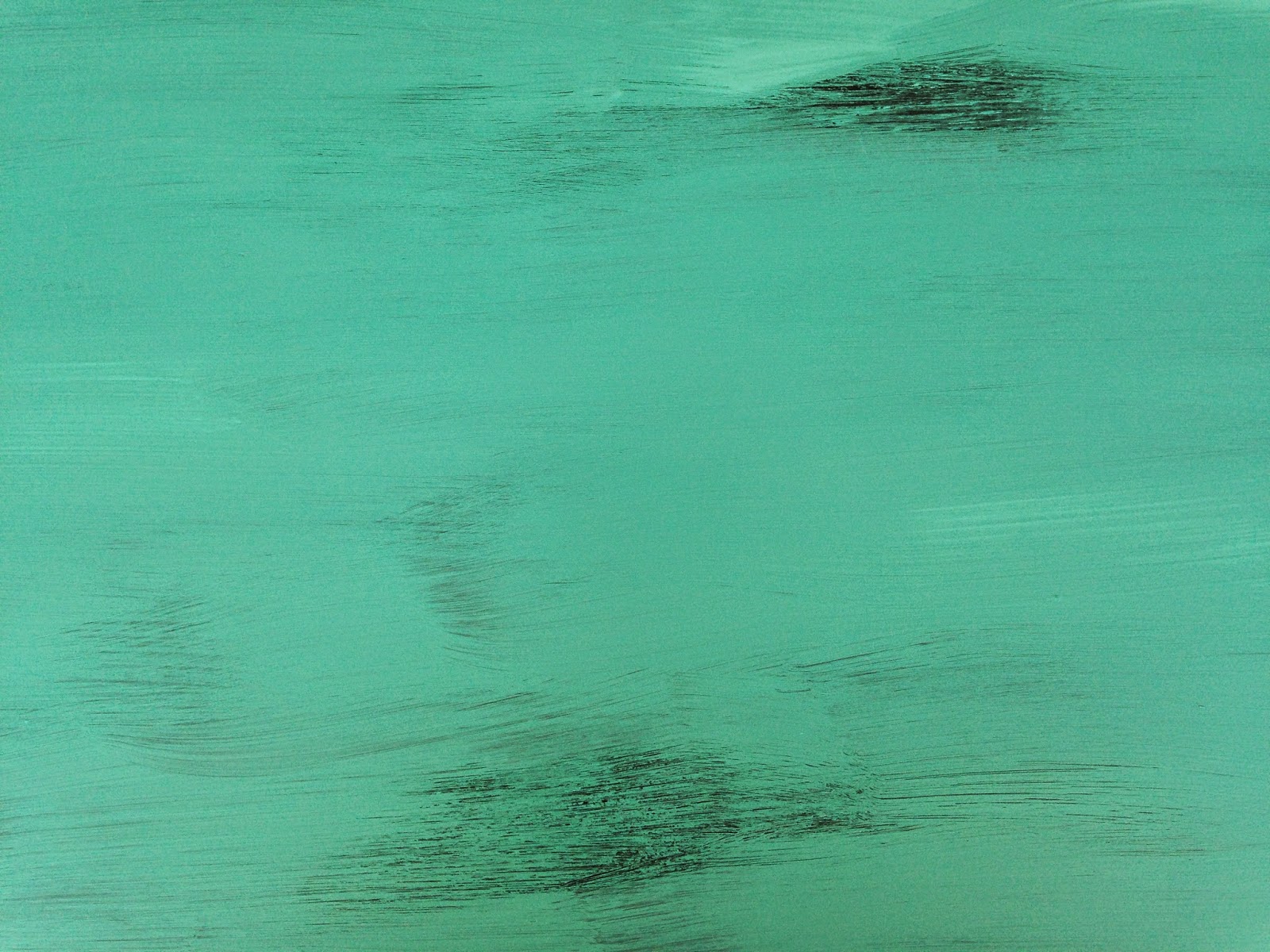So together we picked a 4 oz jar of Annie Sloan paint that would compliment my cream paint. It was a Old Ochre, which is a very light beige, with a strong yellow ting. This was the perfect color to add the age I wanted to the cream paint.
The first step in this process was getting the furniture cream. I made my own chalk paint using calcium carbonate, a dash of water and cream paint. Make sure you mix the chalk and water first in a cup, then add paint. I am finding that the best consistency of the calcium carbonate (CC) and water is like the consistency of a tight batch of corn starch and water. Make sure to mix the CC and water really well before adding paint. Then mix the paint and CC very well!! You don't want clumps of chalk in your paint! Note- Painting dark furniture with homemade cream chalk paint is not suggested. You are better off spending the extra money and buying a quart of chalk paint. I say this because it is hard to cover dark furniture. I had to put on 3 layers of paint to the dark coffee table. If you are doing a big piece of furniture, it is not worth the extra time!!!
Once the cream was dry, I mixed up a 50/50 ratio of Old Ochre and water. Taking a nice brush (Purdy or Wooster), I painted over the cream in nice long strokes. I let the paint set for a minute or so and then using a wet rag (must be wet!) I wiped over the paint. I wiped and wiped until I got a look I wanted. Just make sure when you are wiping, you are doing nice strokes. You don't want to see where the rag stopped. The great thing is is that you can literally wipe off all the 50/50 paint and start again if you don't like what you did. This does take practice so practice on some pieces before hand. I did that!
I let the paint dry overnight. I took 80 grit sandpaper and sanded the furniture. I wanted a very smooth finish as well as distressing it too. If you don't want to distress it, then take 320 or 400 grit sandpaper and go over the piece. This will sand away any excess chalk and make the piece nice and smooth. For the coffee table, I used a water based polyurethane to seal it. Anything that will be heavily used should be polyed. You can still go over poly with wax if you want that wax finish look. But you can't go over wax with a water based poly! The side table I clear waxed with Old Town Paints clear wax. Annie Sloan's clear wax is just as good.
Here are some pictures of this process.
These were my practice pieces. Old cabinets doors that I made into chalkboards!
I lightly distressed the board and waxed it. Looks amazing!
Larger chalkboard is lightly distressed too and waxed. Love!
Perfectly aged! Lots of character.
I loved the technique so much I took a light blue chalkboard and painted over it with a 50/50 ratio of graphite and water.
Lightly distressed and waxed. So cool!
Same graphite used on this bright navy!
Toned down the color and added more appeal to it.
Client coffee table made by her husband's grandfather. It has a lot of meaning for her husband and he wasn't willing to give it up. You can see that it is dark which just means one of my cream layers was a primer. The other two layers finished it.
This it just cream on it. So boring!This is the final piece.
You can see the light beige layer. Lightly distressed. Two coats of water based poly.
I just love this look!
Before of the client's side table. This is an ikea table. Still in good shape just needs a facelift. The coffee table above and this will be placed in the same room so we wanted the same look for both pieces.
Painted just cream. Again, boring!
This looks so much better! You can really see the layers of paint in this.Lightly distressed and waxed.
What a great way to keep a piece of furniture you like, but give it a new look.
So all in all, this is hands down a great way to make furniture stand out. I am sure I will be doing this 50/50 ratio quiet often. I layering 2 colors of paint and wiping the top layer off with a wet rag (much easier than sanding). I heard that is a great way to get a "restoration hardware" look. So stay tuned for that!
Happy painting everyone!!!
















































